- Home
- Simon Winchester
The Perfectionists Page 21
The Perfectionists Read online
Page 21
IN THE IMMEDIATE aftermath of the incident, the airline grounded all six of the Airbus A380s in its fleet, and angrily threatened lawsuits against Rolls-Royce because of the commercial impact of the accident. Yet anger plays no part in an investigation into an aircraft accident, and the Australian government’s Transport Safety Bureau then took the lead in determining what or who was at fault. The official report, issued almost three years after the accident, in June 2013, turned out to be a damning indictment of an industrial culture that had taken for granted the need for absolute precision to be applied consistently in the making of every single part of a modern high-performance jet.
For it transpired that the fate of this engine, of this plane, of these passengers and crew, of the reputation of an airline and of the engine maker, all turned on the performance of one tiny metal pipe. It was a pipe no more than five centimeters long and three-quarters of a centimeter in diameter, into which someone at a factory in the northern English Midlands had bored a tiny hole, but had mistakenly bored it fractionally out of true.
The engine part in question is called an oil feed stub pipe, and though there are many small steel tubes wandering snakelike through any engine, this particular one, a slightly wider stub at the end of longer but narrower snakelike pipe, was positioned in the red-hot air chamber between the high- and intermediate-pressure turbine discs. It was designed to send oil down to the bearings on the rotor that carried the fast-spinning disc. It needed to have a filter fitted into it, so the stub end of it had to be reamed out to make certain it could accommodate the metal ring of this filter.
The fractured oil feed stub pipe that failed due to metal fatigue caused by slightly misaligned machining that left the pipe a little thinner on one side. Fatigue cracking probably began upon takeoff in Los Angeles, and worsened after takeoff from London. A minute after takeoff from Singapore, the pipe broke open and spewed hot oil over the rapidly spinning rotor.
Photograph courtesy of the Australian Transport Safety Bureau.
The tube and the assembly around it had been manufactured in a Rolls-Royce plant, Hucknall Casings and Structures, sometime in the spring of 2009. In normal circumstances, it would have been trivially easy to machine the pipe for the filter fitting, and to do so to the exacting standards laid down by the designers of the engine. But for this particularly complicated part of this particular engine, it was decided to complete first the entirety of the hub assembly that separates the high-pressure from the intermediate-pressure areas of the engine—and then and only then, once the pipe had been fitted into place in this assembly, to drill out the tube to its design specifications. This proved to be exceptionally difficult, however, because now parts of the pipe could not be readily seen, as other parts of the fully assembled hub and newly made welds of its various pieces obscured the engineers’ clear sight of it.
These engineers did the best they could, but in the end, the tiny pipe that would eventually go into the turbine of the engine that would be suspended from the port side wing of the Qantas A380 was machined improperly: the drill bit that did the work was misaligned, with the result that along one small portion of its circumference, the tube was about half a millimeter too thin.
The assumption is that, during manufacture, the hub assembly somehow moved a tiny amount as it was being drilled, with the result that the drill bit moved fractionally closer to one wall of the pipe, reducing it to what would be dangerously vulnerable thinness. More dangerously still, the quality-control departments at Hucknall Casings, and the computer-driven machines that check the conformance of all critical parts of an aircraft, passed the tube as being satisfactory. The badly made part should have thrown up all manner of red flags. It should have been discarded—a high-pressure turbine blade, deemed to be an absolutely critical and safety-critical part of an engine, would have been tossed out and smashed for an error far less significant than the error in this tube.
Yet, for reasons that have much to do with what is euphemistically called the “culture” of that particular facility within Rolls-Royce’s immense engineering establishment, the stub pipe passed all its inspections. A potentially weakened engine component made its way all along the supply chain until it was placed into the engine, and there to await its inevitable breakage—and the equally inevitable destruction of the entire engine. It should have failed inspection, but it didn’t. It just failed in real life.
Metal fatigue is what did it. The aircraft had spent 8,500 hours aloft, and had performed 1,800 takeoff and landing cycles. It is these last that punish the mechanical parts of a plane: the landing gear, the flaps, the brakes, and the internal components of the jet engines. For, every time there is a truly fast or steep takeoff, or every time there is a hard landing, these parts are put under stress that is momentarily greater than the running stresses of temperature and pressure for which the innards of a jet engine are notorious.
And from what can be divined, the weakness in the wall of the stub pipe gradually transformed itself into a fatigue crack. That crack first opened, very slightly, investigators believe, when the plane took off from a short runway in Los Angeles two days prior to its takeoff from Singapore. The fissure then began to spread and to open a little more when the plane landed in London; it came under still further stress when the plane took off from Heathrow bound for Singapore, and once again when it landed at Changi Airport hours before its departure for Sydney.
Ninety seconds after this midmorning takeoff, with the plane climbing steeply and the engine running at 86 percent of full power, throwing out more than 65,000 pounds of thrust, the crack finally opened fully and the pipe ruptured. A spray of hot oil immediately hissed out into the void between the high- and intermediate-pressure turbines, where the temperature was already at some 400 degrees Celsius. The auto-ignition temperature of the oil was 286 degrees, and the jet of oil mist became like a high-powered flamethrower, pouring fire against the huge, heavy, rapidly spinning turbine disc.
After a few seconds of such ferocious heating, the disc expanded, lost its shape, began to wobble furiously, and then eventually broke, and hurled its fractured segments at hundreds of miles an hour out through the engine and out of the casing and, in two instances, through the left wing of the plane and, in a third, clear through the bottom of the fuselage. A brief flash fire broke out inside the left wing, but mercifully did not spread; the damage to the hydraulics and electrics occasioned by the shrapnel caused a series of major failures to the aircraft systems. All ended well, thanks in large part to the crew, as the Australian government report noted.
What the report also noted, however, were the failures within Rolls-Royce: the failure to machine a critical part properly, the failure to keep proper records, the failure to inspect properly, and the failure to reject what were called “non-conforming” parts, and to allow them to pass into service, with potentially lethal consequences. The delivery of such engines to Qantas was far from unique: hasty inspection soon after the accident revealed that scores of Hucknall made oil pipes with misaligned walls thinner than half a millimeter had already gone into service, with the consequence that no fewer than forty engines, in use by Singapore Airlines and Lufthansa, and on all the remaining five Qantas aircraft, needed to be withdrawn from use and repaired.
It was a costly mistake by Rolls-Royce, for not only were there internal repercussions, expensive repairs, staff changes, procedural reforms, and public relations nightmares, but also Qantas was paid some eighty million dollars in compensation; the Rolls-Royce balance sheet for the year after the event showed a net loss to the company of seventy million dollars. The firm insists that such an error is unlikely to happen again, and that all necessary precautions have been taken, at Hucknall and elsewhere.
BURIED DEEP WITHIN the Australian government report on the accident is one paragraph that seems especially relevant to the wider issues posed by the ever-increasing precision of modern machinery. Like much of the 284-page report, the paragraph is rich with jargon, but the basic
message shines through nonetheless:
Large aerospace organizations are complex sociotechnical systems made up of organized humans producing highly technical artefacts for complex systems, such as modern aircraft. Due to the inherent nature of these complex sociotechnical systems, their natural tendency is to regress if not constantly monitored—and occasionally even when monitored vigorously. This natural regression can occur due to the pressure applied via global economic forces, the requirement for developing growth, profit and market share . . .
“Highly technical artefacts for complex systems”—shorthand, or rather, bureaucratic longhand, for ultraprecise machines, such as the Trent 900-series jet engine. Maybe, this incident will suggest to some, modern machines of certain specific kinds are being made now with just too much precision, with too much complexity, for it to be prudent for humans to participate in the making of them. If this is true, it might reasonably prompt the question: could we be seeing here the beginning of the upper limits of our ability to manage the kind of precision we think we need?
Or maybe precision is itself reaching some kind of limits, where dimensions can be neither made nor measured—not so much because humans are too limited in their faculties to do so but, rather, because as engineering reaches ever downward, the inherent properties of matter start to become impossibly ambiguous. The German theoretical physicist Werner Heisenberg, in helping in the 1920s to father the concepts of quantum mechanics, made discoveries and presented calculations that first suggested this might be true: that in dealing with the tiniest of particles, the tiniest of tolerances, the normal rules of precise measurement simply cease to apply. At near-and subatomic levels, solidity becomes merely a chimera; matter comes packaged as either waves or particles that are by themselves both indistinguishable and immeasurable and, even to the greatest talents, only vaguely comprehensible.*
In the making of the smallest parts for today’s great jet engines, we are reaching down nowhere near the limits that so exercise the minds of quantum mechanicians. Yet we have reached a point in the story where we begin to notice our own possible limitations and, by extension and extrapolation, also the possible end point of our search for perfection. There may be an event horizon coming into view—and if so, then the work being performed at the jet engine makers of the world, where so much depends on such a testing level of precision, acts as a signpost, a warning that an end of sorts may be in sight.
Perhaps this sense of technical foreboding is true—as far as the making of machines and devices that are directly applicable to human-scale activities is concerned. Then again, to go beyond this, to venture into other worlds and to deal with other universes, maybe the limits that seem about to challenge human competence can in fact be pushed even higher and higher. Maybe, in these other worlds, precision can be further and further refined, with no end to its limits in sight.
Out in space, for example, all may be very different.
Chapter 7
(TOLERANCE: 0.000 000 000 000 1)
Through a Glass, Distinctly
The fate of human civilization will depend on whether the rockets of the future carry the astronomer’s telescope or a hydrogen bomb.
—SIR BERNARD LOVELL, THE INDIVIDUAL AND THE UNIVERSE (1959)
Murder most foul was committed one quiet summer’s evening in a leafy South London park, but no one happened to notice it—not until the moment a fashion photographer, working quietly in his darkroom, enlarged and enlarged an otherwise innocent black-and-white image that he had taken in the park a while before and saw, or thought he saw, hidden in the trees, a hand with a gun and a body in the grass.
His film stock was grainy, and the enlarged pictures were blurred, but the images, all part of the story line from Michelangelo Antonioni’s Oscar-nominated movie, Blow-Up, remain to haunt us to this day, and though the movie was about very many more things than murder, they serve as a reminder of the unassailable power of the camera to render random moments, sometimes quite inadvertently, into permanent historical truth—as I have lately come to know.
I work in an old timber-framed barn, a onetime granary built in upstate New York back in the 1820s. It was a tumbledown ruin when I bought it, and so I had its posts and beams trucked down to where I live, in a remote hamlet in the hills of western Massachusetts, and saw it rebuilt there in the summer of 2002. The internal arrangements of this modest little building allow for someone to look down from an upper gallery onto the confused mess that is my desk, fifteen feet below.
Because the barn is quite old, and because the phenomenon of breathing new life into old and decaying farm structures and renewing them as a living part of today’s New England scenery was thought interesting, a photographer turned up one afternoon. He said he was working on a book on barn restorations, and once I happily gave him free rein, he spent some hours taking pictures, including some, from the gallery, of my paper-strewn desk below.
The images duly appeared in a rather handsome coffee-table book about the barn-rebuilding phenomenon. As a courtesy, I was duly sent a copy. I spent an evening admiring it (though, in truth, mostly envying barns of far greater grandeur than my own modest granary-that-was) before filing the volume away on the shelves and thinking no more of it.
Except, it turned out that someone quite unknown to me bought a copy of the book, too, and professed a liking for the little study structure he came across on page 61. Whether he was a fan of Blow-Up, I never knew, but he thought he might be able to find out just who it was who lived and worked there.
For on the desk in the picture was a copy of the New York Review of Books, half-covered with other litter: magazines and books and papers. The purchaser of the barn book espied that at the lower-right-hand side of the Review was an address label, small and barely noticeable to most. But to this fellow, it provided a possible source of information—if, that is, the lens that took the photograph was good enough for the label to be read when greatly magnified.
So he cut off the front cover of the Review, separating it from the other mess on the desk, and subjected it to ever-increasing degrees of magnification. The small and indistinct letters duly become ever larger and larger—until, even though the pixels of the printed image made for some eventual confusion, after four or five iterations of expansion, my name and address became legible. And all of a sudden, this mystery man knew who it was, most probably, who owned or lived in or made use of the barn. He got in touch.
And though the process sounds at this remove somewhat Peeping Tom–like, even faintly sinister, it turned out not to be so at all—the inquirer was entirely pleasant and most interesting; determined, slightly obsessive, maybe a trifle “on the spectrum,” as is said today. He was a retired vascular neurosurgeon. He was a keen photographer. He was endlessly, preternaturally curious—polymathic, one might say—and he was fascinated most especially with the capabilities of precise optics in allowing for forensic detection, and with all the intellectual satisfaction that this could bring him.
AS FOR MOST English schoolboys—for most schoolchildren everywhere, I daresay—lenses played a not insignificant part in my life. My first (most of which back in the 1940s were made of glass, plastic in those days being hardly good enough, and polycarbonates almost unknown) were all double-sided convex magnifiers. The first such lenses were used for trivia and for mischief: for examining tadpoles and peering at insufficiently detailed pictures in naturist magazines, for starting campfires, or for waking other boys foolishly unwary enough to fall asleep in the sunshine—a brief focus of sunlight on a bare arm would bring the deepest sleeper fully awake in seconds.
Better-quality lenses became more important to me when I was about ten and I became fascinated by phasmids, or stick insects. I would breed them—their homes were my mother’s old Kilner jars filled with privet leaves from our garden hedge—and sell them to my classmates, threepence a time. But stick insects often develop strange microscopic problems—they sometimes find themselves unable to shake from their feet (of
which, being insects, they have six) the egg cases from which they are born. Microsurgery, involving a needle, a fine tweezer, and my trusty times-ten magnifier, usually did the trick.
Then came gathering maturity. I went on to collect stamps, and amassed a collection of several magnifiers: a square-shaped lens to view the smaller stamps in full, a jeweler’s loupe that I screwed into my eye and used for counting perforations and for spotting franking mishaps, and a heavy glass implement that looked like a paperweight but that, when I swept it across an album page, would let me display my collection, duly enlarged, to any curious passerby.
Precision optics (which generally meant expensive optics, and consequent pleas to the parents for funds) became of interest only when I hit fourteen or so, and needed, as I saw it, a microscope. Money was always short, but by rooting through secondhand shops and street barrows, I eventually acquired a range of those, too (made by firms such as Negretti and Zambra, Bausch and Lomb, Carl Zeiss), all in handsome wooden cases with slots for the changeable eyepieces and smaller slots for the magnifying lenses. I recall that there was a 1950s version of today’s pixel envy, which had youngsters arguing over whose instrument offered the highest magnification. Given that we were looking at samples of pond water to spy out examples of Daphnia, or seawater to find those little pointed slivers of Amphioxus, and had neither the knowledge nor the equipment to probe much further into the world that Galileo and van Leeuwenhoek had bequeathed to us, there was little value in going beyond three-hundred-times magnification. I rather think some of my lenses allowed magnifications of a thousand, which was useless to my clumsy hands, which would knock something out of the field of view in an instant at what seemed like rocket speed. Some adolescent members of the school microscope club claimed to have seen their own spermatozoa, which struck me back then as both doubtful and disgusting, and also requiring an improbably handsome degree of magnification.

 The Surgeon of Crowthorne
The Surgeon of Crowthorne Korea: A Walk Through the Land of Miracles
Korea: A Walk Through the Land of Miracles The Men Who United the States: America's Explorers
The Men Who United the States: America's Explorers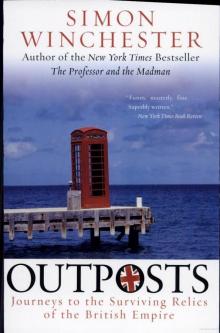 Outposts: Journeys to the Surviving Relics of the British Empire
Outposts: Journeys to the Surviving Relics of the British Empire Atlantic: Great Sea Battles, Heroic Discoveries, Titanic Storms
Atlantic: Great Sea Battles, Heroic Discoveries, Titanic Storms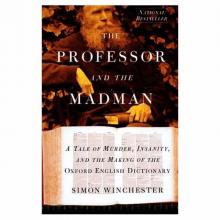 The Professor and the Madman: A Tale of Murder, Insanity
The Professor and the Madman: A Tale of Murder, Insanity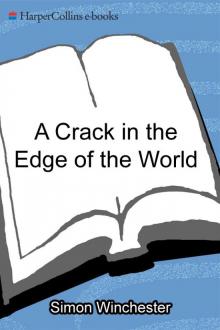 A Crack in the Edge of the World
A Crack in the Edge of the World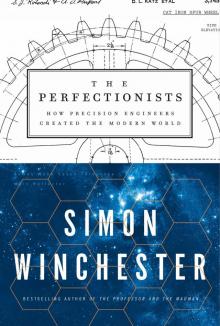 The Perfectionists: How Precision Engineers Created the Modern World
The Perfectionists: How Precision Engineers Created the Modern World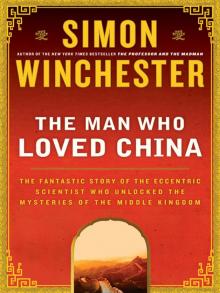 The Man Who Loved China: The Fantastic Story of the Eccentric Scientist
The Man Who Loved China: The Fantastic Story of the Eccentric Scientist The River at the Center of the World: A Journey Up the Yangtze
The River at the Center of the World: A Journey Up the Yangtze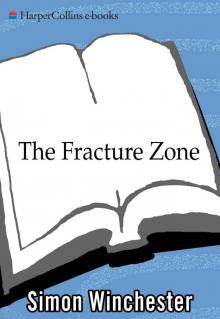 The Fracture Zone: My Return to the Balkans
The Fracture Zone: My Return to the Balkans The Map That Changed the World
The Map That Changed the World Krakatoa: The Day the World Exploded
Krakatoa: The Day the World Exploded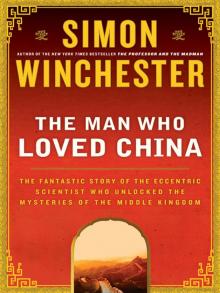 The Man Who Loved China
The Man Who Loved China The River at the Centre of the World
The River at the Centre of the World Bomb, Book and Compass
Bomb, Book and Compass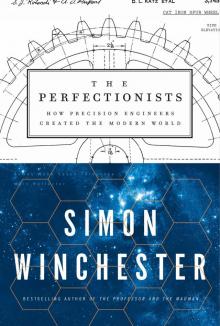 The Perfectionists
The Perfectionists The Meaning of Everything
The Meaning of Everything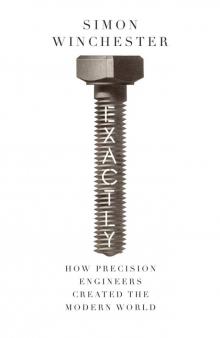 Exactly
Exactly Atlantic
Atlantic Korea
Korea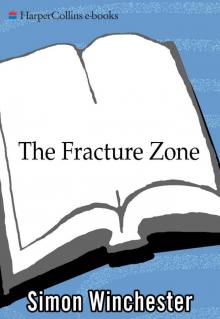 The Fracture Zone
The Fracture Zone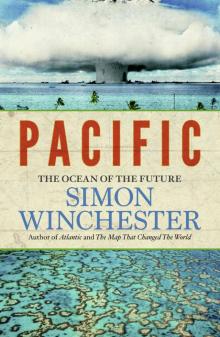 Pacific
Pacific Krakatoa
Krakatoa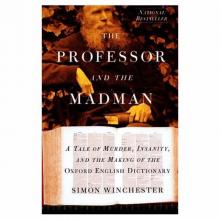 The Professor and the Madman
The Professor and the Madman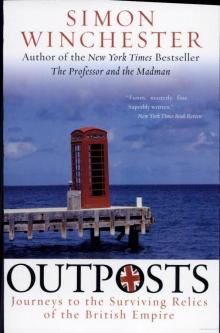 Outposts
Outposts